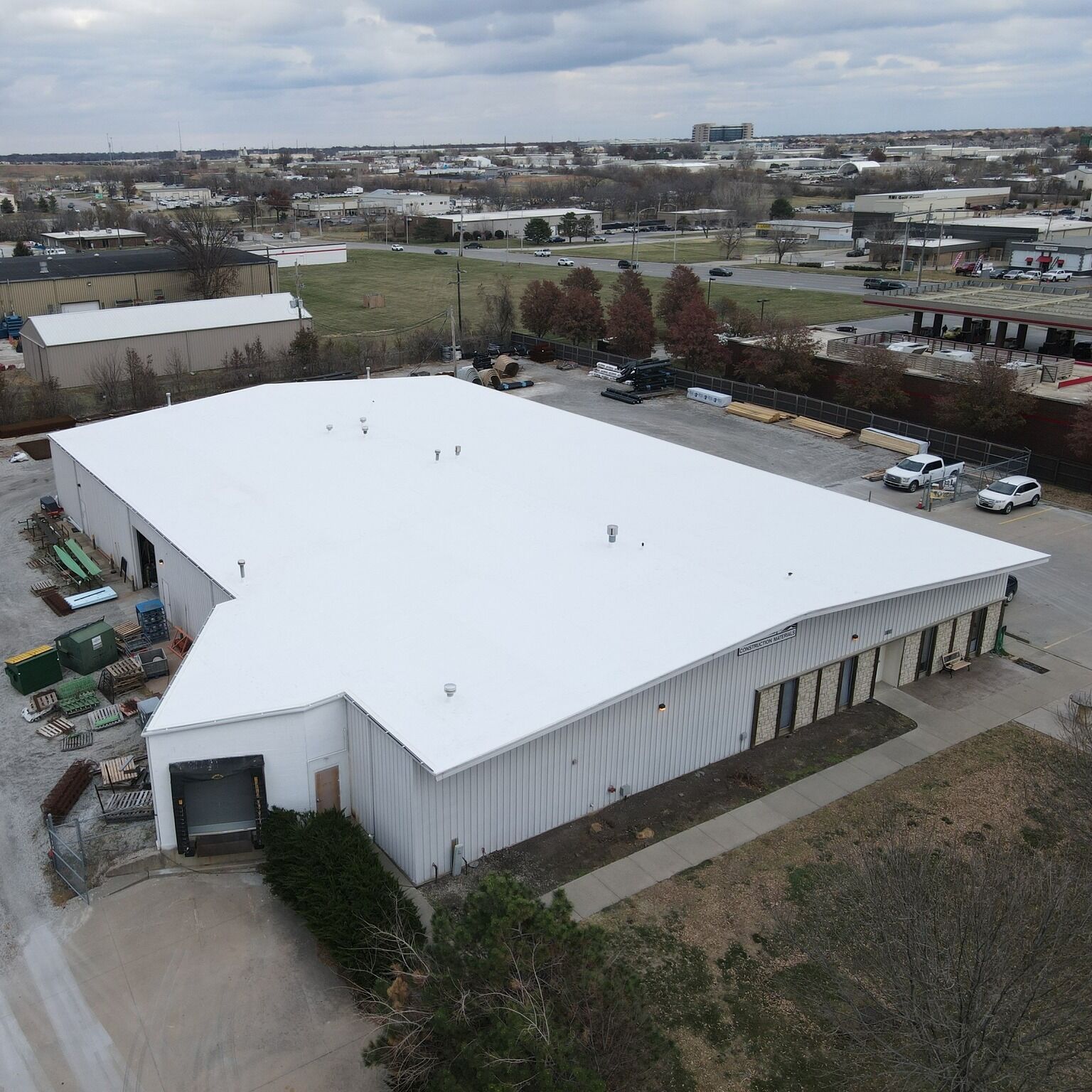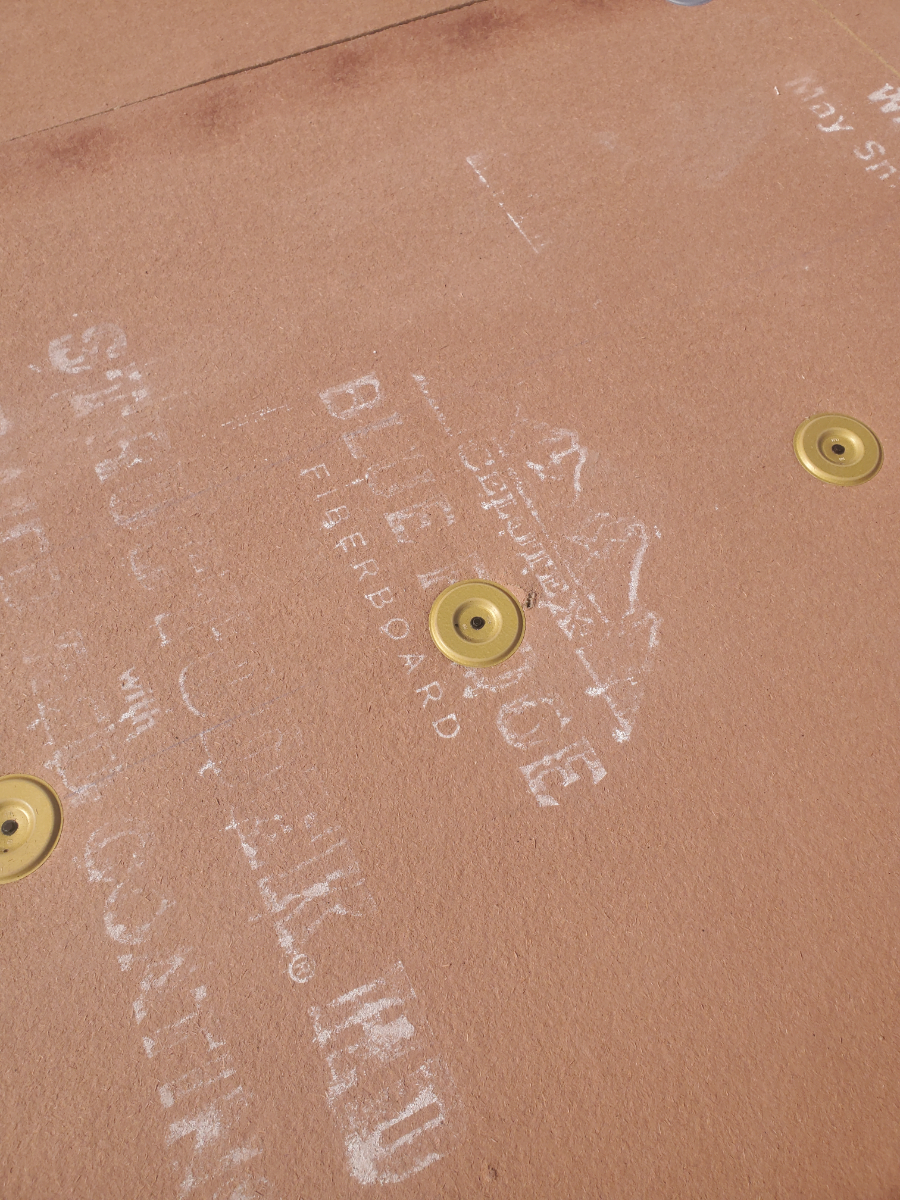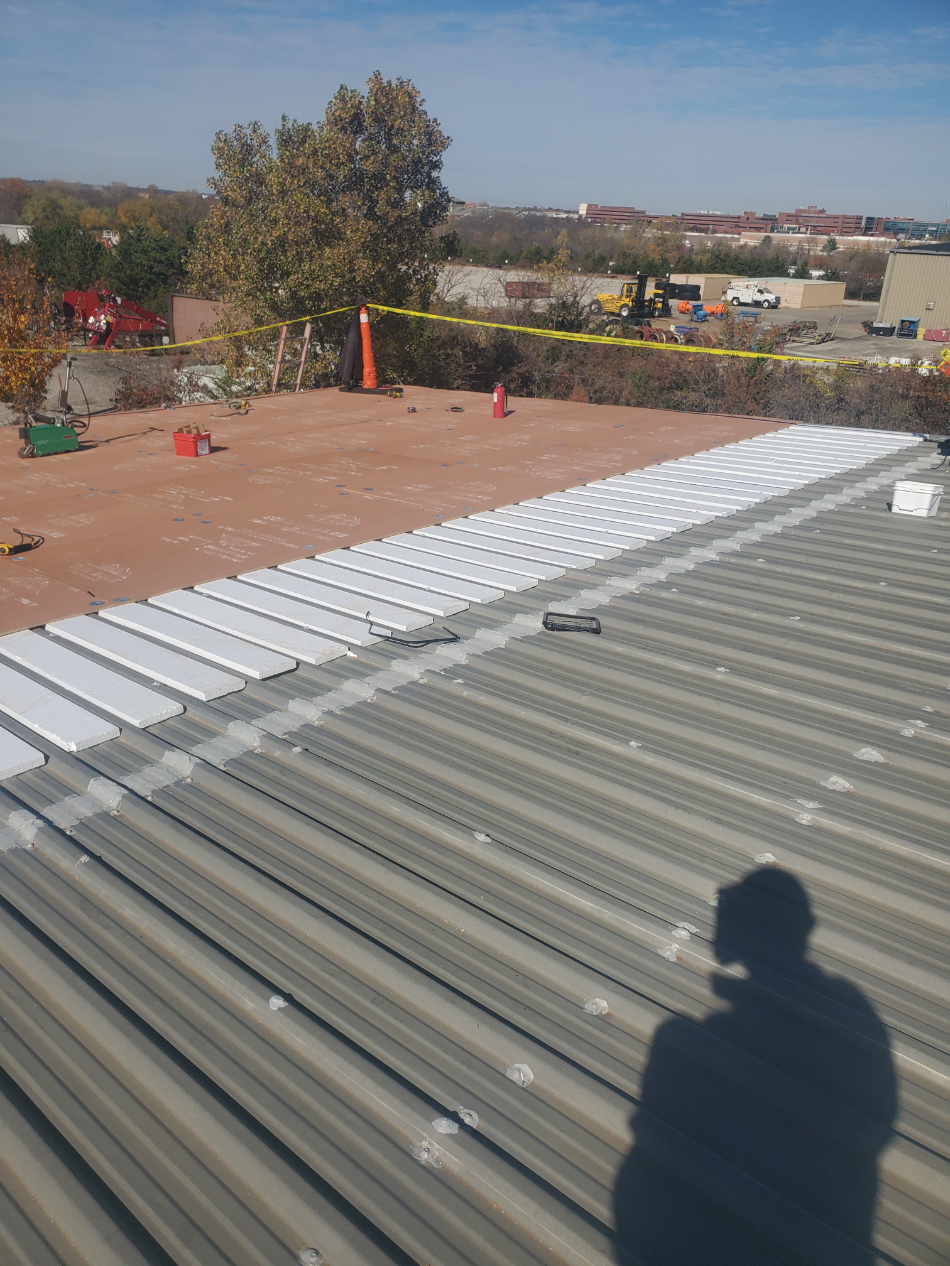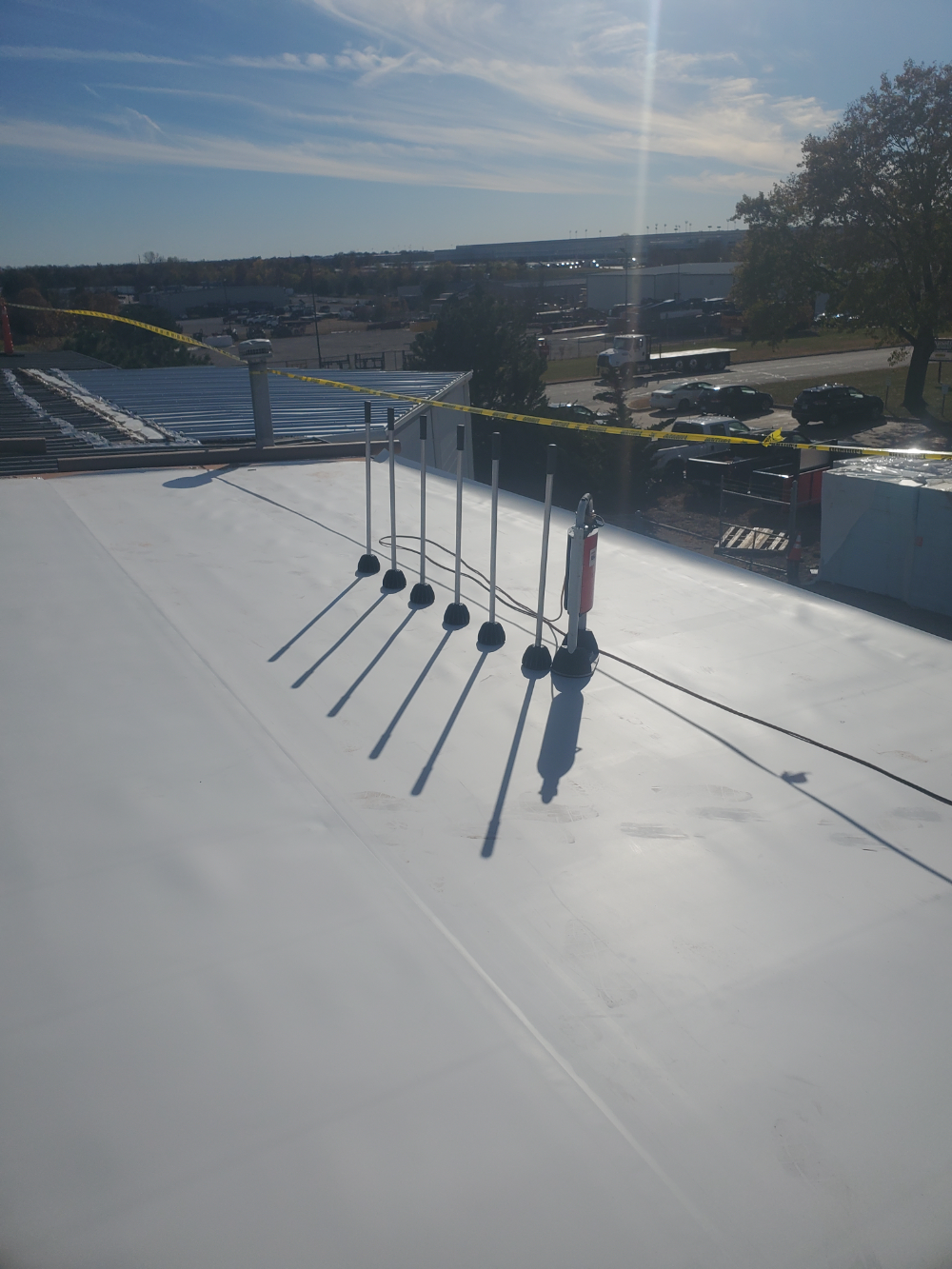If you have a failing metal roof system, there are several options to restore or replace this system:
- Remove and replace the metal roof
- Seal seams and fasteners and apply an elastomeric coating
- Retrofit the metal roof with a new TPO membrane
A metal replacement is the most costly of these options and not necessarily the best. Removing and replacing a metal roof is invasive, noisy, and not relatively fast.
Coating a metal roof can be a great economical option. In some circumstances, only the seams and fasteners can be coated and prevent water infiltration for a long time.
Flute-fill TPO systems offer a middle-ground between a full metal replacement and an elastomeric coating.
The process is simple, less invasive than a metal replacement, and can be warrantied for up to 20 years on material, labor, and workmanship.
Here’s how it works:
Step 1: Flute Fill
Flutes on a metal roof are the spaces between the ribs. The first part of a TPO metal retrofit project involves filling these spaces with new EPS or polyiso insulation to even the surface. The insulation can be rectangular blocks or beveled to fit the profile of the metal panels.
Step 2: Install New Coverboard
After the flute fill is installed, a coverboard is placed on top to further even the surface and provide a solid substrate for the new TPO roof system. The coverboard can be as simple and economical as a wood fiberboard, or it can be a high-density polyisocyanurate insulation board or even a rigid coverboard like DensDeck. Selection of coverboard should be based on your building’s insulation and performance needs.
Step 3: Rhinobond Plates
The coverboard and underlying insulation are secured to the structure through specialized gold induction-weld plates, called Rhinobond plates. Special metal purlin fasteners are used to secure these plates to the metal building’s structural members. These plates will simultaneously secure the insulation, coverboards, and membrane, as we will describe below.
Step 4: Install TPO
After all the insulation is secured, the new rolls of TPO are installed, heat-welded at the seams. Once the new TPO is laid out over the coverboard, it is attached not through fasteners along the seams or through adhesive, but through Rhinobond induction welding technology. A Rhinobond machine is used to heat the membrane locally over the Rhinobond plates so that the membrane welds to the plate, forming an extremely strong bond. Rhinobond magnets then follow to ensure that the weld adequately forms.
Step 5: Enjoy Your New Warrantied TPO Roof System
Now that the work is done, the building’s roof system is ready to remain waterproof for years to come with regular maintenance inspections. If you’re interested in learning if your building might be a good candidate for a TPO retrofit, give us a call!




